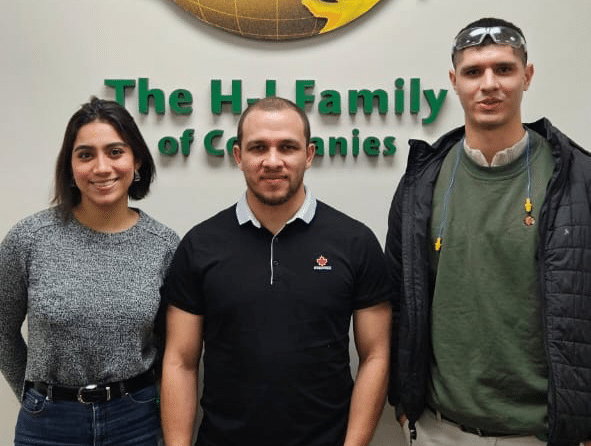The Institute of International Education kicked off a celebration of its centennial this February with its Summit in NYC. But even after 100 years, I learned that the international education community is still trying to find answers to some difficult mysteries. The two that stood out to me the most are:
- How to internationalize U.S. campuses by diversifying the number of countries that international students come from;
- How to make sure more American students study abroad to develop global workforce skills.
Having been an international student in the U.S. myself and now working in the field of international cultural exchange programs, here’s my own take on these two questions.
Why U.S. universities need a better value proposition for EU students.
The U.S. Department of State views the presence of international students on U.S. campuses as beneficial for two major reasons:
- They bring money to local economies (see data by state)
- Their presence and participation in classrooms means more exposure to different world views and ideas for domestic students (see more from EducationUSA and U.S. Secretary of State, Mike Pompeo)
When it comes to economic impact (point 1), it’s pretty straightforward. Marie Royce, Assistant Secretary of State for Educational and Cultural Affairs, shared with us at the Summit that, in 2017, international students contributed $42.4 billion dollars while also supporting more than 450,000 domestic American jobs.
In terms of campus internationalization (point 2), the situation looks rather tricky. It seems to me that it’s not easy for U.S. universities to ensure that international students on their campuses represent a diverse set of countries, cultures, languages, and worldviews.
For example, Open Doors data from the past 18 years shows that international student influx from India and China has jumped up significantly (from 42,337 to 196,271 for India, and from 54,466 to 363,341 for China). Compare this to EU countries (think Germany, France), whose numbers haven’t grown much at all (from 9,800 to 10,042 for Germany, and from 7,401 to 8,802 for France).
Why is it that these European numbers have been so stagnant? Because U.S. higher ed institutions don’t have a worthwhile value proposition for European students.
The cost of tuition is the main reason. Higher education in Europe is free, or inexpensive compared to the U.S, and EU students can easily study internationally much closer to home. Many European universities take top positions in international university rankings, and it’s not uncommon for universities to offer instruction in English, to make sure EU students are competitive in the global workforce.
If U.S. higher education institutions want to diversify internationalization on their campuses and grow in markets beyond already well established ones, like India and China, they need to look for creative ways to utilize a portion of international student tuition fees and make more scholarships available to international students.
This information needs to be placed at the forefront of all international student recruitment materials, including the website. Taking into account that incoming students represent a tech savvy Generation Z, this scholarship application process needs to be easy to follow, almost intuitive, and available via all platforms (think smartphones as priority).
If U.S. universities are truly committed to internationalizing their campuses, they will need to invest in it.
Why the U.S. needs domestic youth exchange programs.
The IIE Summit made me realize that the education industry in the U.S. is trying to address the issue of not enough Americans studying abroad in some sort of a vacuum. The conversation about this subject mostly zeroed in on numbers: GPAs, money, income, graduation rates, job placement rates, cost, etc.
It seems to me that the most important piece in this conversation was missing. Going abroad, whether to study or just to travel, is also about curiosity, passion, adventurous spirit, fearlessness, acceptance, respect, awareness, manners, humility, and selflessness.
These integral parts of Self don’t depend on the market or globalization, workforce situation, or GPA rates. It’s a state of mind and it is not created or achieved overnight. It’s cultivated and nourished throughout one’s lifetime. I personally think about curiosity as a muscle. You need to train it, regularly and continuously.
The key to encouraging more Americans to study abroad is not to wait until they get into college to make this choice. To prepare students for this type of decision-making, we need to engage them early and start developing their ‘curiosity muscle’ at a younger age.
Accessible domestic study/cultural exchange programs for youth are the answer. America is well-known for its regional, linguistic, and cultural differences. Living in rural Iowa is very different from a packed and fast-paced NYC. Landscapes in Texas are different from the ones in Maine; so is the way people speak. Because of its size and these unique diversities, I see the U.S. as a country with great potential to create the culture of domestic youth travel exchanges.
Such exchange opportunities will expose American future college students to the thrill of travel, help them step outside their comfort zones, let them experience different lifestyles and ways of seeing and doing things. Such experiences will help shape and develop their “curiosity muscle”, and, thus, will encourage them to choose to study abroad, as their next step.
If American universities want more of their students to benefit from studying abroad programs, they need to lead the conversation about creating domestic study and cultural exchange programs first.




